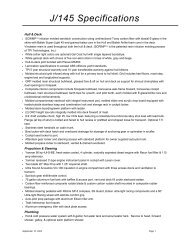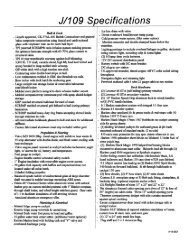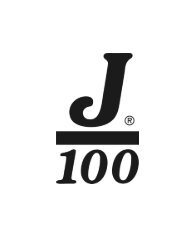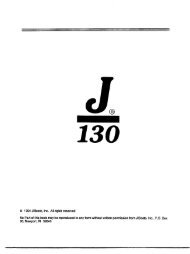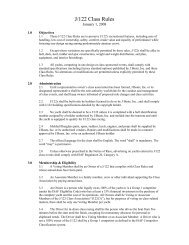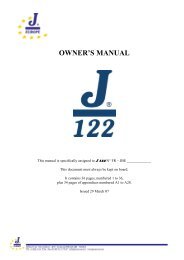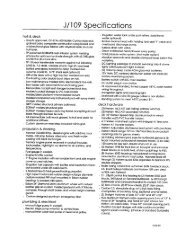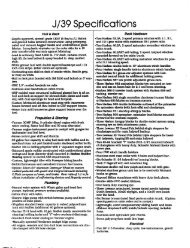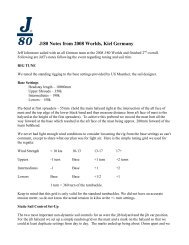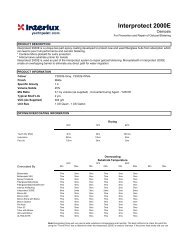J105 Owner Manual 2012.pdf - J/Owners
J105 Owner Manual 2012.pdf - J/Owners
J105 Owner Manual 2012.pdf - J/Owners
You also want an ePaper? Increase the reach of your titles
YUMPU automatically turns print PDFs into web optimized ePapers that Google loves.
J/105 <strong>Owner</strong> Guide ...................................................................................................................................................................................................................................................... 8 <br />
Getting Started With Your J/105 <br />
Generally, your dealer or commissioning yard will help you prepare your boat before launching. <br />
And in most instances they will undertake the entire commissioning job. They are experts in the <br />
field and are capable of completing most commissioning tasks. <br />
Before Proceeding <br />
Before you begin to assemble your new boat you should become familiar with the different sail <br />
control systems and associated hardware. All running rigging and loose deck hardware items are <br />
shipped from the factory in parts boxes complete with part inventory sheets. To help you <br />
properly install these items please refer to the rigging and hardware sections and diagrams in <br />
this guide. <br />
Commissioning Checklist -‐ will help you double check that the J/105 is assembled properly and all <br />
systems and rigging are functioning properly. If a boatyard other than an authorized J/Boat <br />
dealer is performing the work, review this list with them to establish what needs to be done and <br />
by whom. <br />
Topsides -‐ wash off all dirt and grime accumulated from delivery. Use only non-‐abrasive <br />
cleansers on the gelcoat. Then apply a coat of high quality car or boat wax to prolong the life and <br />
sheen of the gelcoat. <br />
Bottom -‐ Bottom preparation is critical to long-‐lasting enjoyment. To ensure a professional <br />
finish, carefully review the paint manufacturer’s recommendations for preparing the bottom. Be <br />
sure that there is a healthy amount of epoxy primer (using paint manufacturer build-‐up <br />
recommendations) to cover the keel PRIOR to final coating of bottom paint. <br />
Chainplates -‐ are custom manufactured of polished stainless steel. Shroud chainplates are <br />
mounted directly to the main bulkhead. The backstay chainplate is bolted to a reinforced area of <br />
the transom. <br />
Toe Rails -‐ toerails are included at the deck edge forward of the mast and in the cockpit for the <br />
helmsman aft of the wheel. <br />
Stanchions & Pulpits -‐ are designed for proper offshore safety as well as to facilitate access to the <br />
boat. Optional are lifeline gates to port and starboard. The (3) standard stern lifelines are <br />
equipped with quick release Pelican hook fittings. All stanchions are 1” diameter stainless steel <br />
and are secured into their bases with machine set screws. <br />
Lifelines -‐ The upper and lower lifelines are 5/32" 1x19 wire in accordance with ORC safety <br />
regulations. They run the length of the boat and are fastened at either end by stainless forks and <br />
turnbuckles. Each lifeline is clearly marked for easy installation. The installation is as follows: <br />
• Insert all stanchions into the sockets provided along the edge of the deck. Secure each <br />
stanchion in place by tightening the two screws in each base. We recommend that you <br />
dip the screws in blue Loctite or sealant before securing, so they don’t work themselves <br />
loose over time.



